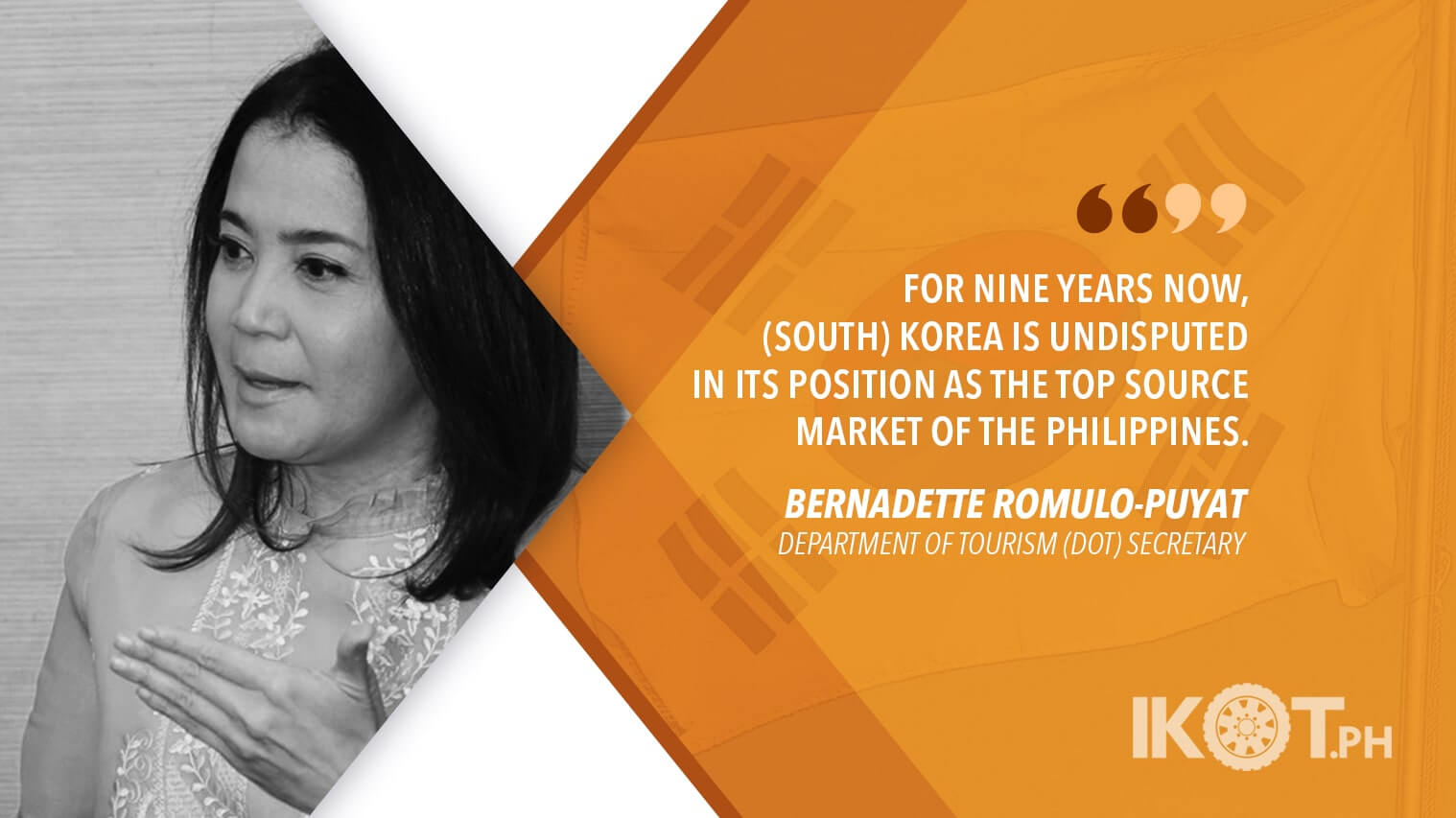The Philippines continues to secure strong tourism ties with South Korea, with the signing of the Implementation Program on Tourism Cooperation between the two countries held at the Westin Chosun Hotel in Busan.
“For nine years now, (South) Korea is undisputed in its position as the top source market of the Philippines. With this renewed pledge on tourism cooperation between the Philippines and Korea, we are hopeful we can sustain and intensify the already-strong ties with Korea that we enjoy,” said Department of Tourism (DOT) Secretary Bernadette Romulo-Puyat, who signed the document on behalf of the Philippines.
On the other hand, South Korea was represented by Minister Park Yang Woo of the Ministry of Culture, Sports and Tourism.
The tourism cooperation, valid from 2019 to 2024, aims to introduce joint programs and activities that will bolster two-way tourism promotion and align tourism efforts between the Philippines and South Korea.
It will also facilitate deeper and meaningful interactions between Filipinos and Koreans, and strengthen the overall cooperation of the two countries on matters concerning tourist safety, security and quality assurance.
In 2018, the DOT recorded 1,624,251 tourist arrivals from South Korea or a 22.78 percent share of the 7,127,678 foreign tourists who visited the Philippines that year.
“Needless to say, South Korea is undisputed in its position as the top source market of the Philippines for nine consecutive years,” Romulo-Puyat said.
To sustain the momentum, the tourism chief said the DOT will embark on a more aggressive marketing campaign to continue to capture a bigger chunk of the Korean market.
“The DOT Korea will be undertaking activities that will support the marketing efforts and collaborate with the travel trade on developing new thematic tour products for specific market segments,” the tourism head stressed.
“In the pipeline are product training programs for sub-agents in Busan and Daegu.”
“Also in the pipeline are product training programs for sub-agents in Busan and Daegu. On top of this, we will encourage more airlines to fly direct to international gateways other than Manila from key cities in Korea,” she added.
Meanwhile, the DOT’s January-September 2019 report showed that South Korea remains the biggest source of visitors for the Philippines, reaching 1,450,792 arrivals, a 20.97 percent growth versus the same period last year. South Korean tourists make up 23.55 percent of the current arrival total.
“These flights include new routes such as Daegu-Kalibo-Daegu, Incheon-Bohol-Incheon, and Muan-Clark-Muan.”
Romulo-Puyat attributed the encouraging figures to the improved air connectivity between the two markets, noting the creation of 14 additional flights to the Philippines from South Korea. These flights include new routes such as Daegu-Kalibo-Daegu, Incheon-Bohol-Incheon, and Muan-Clark-Muan.
“The positive growth only inspires us to constantly improve our work at the Department and to show more Koreans to come visit us and find out why It’s More Fun in the Philippines!” she said.
Romulo-Puyat said that aside from sun and beach tourism, South Koreans come to the Philippines mostly to learn English as a second language (ESL).

